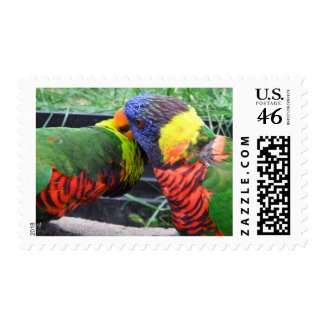It annoys me no end, as a bird fancier, parront, and zoologist, when I come across the term "domesticated parrot." It's an oxymoron. There's no such thing as a domesticated parrot. Domestication requires many, many generations of breeding selectively, and most parrots today are still only a few generations removed from the wild. The closest parrot to domestication is probably the budgerigar, or budgie, or "parakeet," as we Americans ignorantly call them.
And that's another source of irritation - the parakeet. That's like going to the aquarium, and squealing, "Oh, a fish!" Parakeets are not one single species of parrot. They're actually an entire group of parrots, with long, tapering tails. Macaws are parakeets. Cockatiels are parakeets. And Budgerigars, which are the species we love to call parakeets, are also parakeets. It is slightly more correct, if you don't want to call them budgies, to at least refer to them as "American Parakeets." Even though they are an Australian species, at least that lets others know you're referring to what Americans call parakeets.
Did you know parrots do NOT have vocal chords? They are actually mimicking sounds through their trachea. And intentionally teaching a bird swear words is about as funny as tapping on aquarium glass and chanting, "here fishy, fishy, fishy."
Bird seed is actually a really crappy diet for parrots. Most parrots naturally eat vegetables, fruits, and leaves, in much larger quantities than seeds. The seeds found in bird mixes are usually not even what the bird would find in the wild. Seeds are extremely high in fat, which is great for a wild bird that is extremely active and spends a lot of time flying. Not so great for your bird in its cage, that doesn't spend much time hunting for food or flying around. Fatty liver continues to be a great health concern in captive parrots.





No comments:
Post a Comment